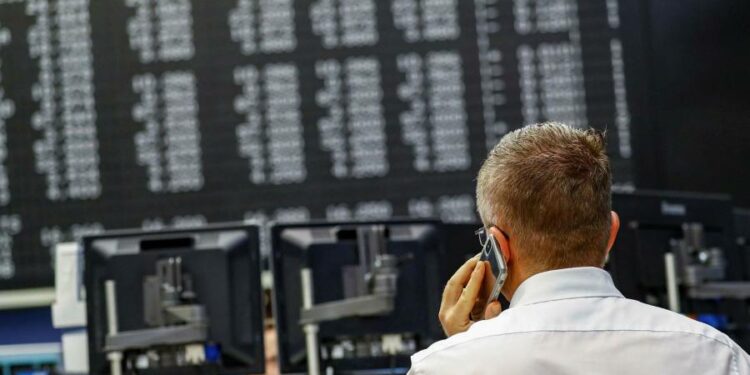European equities dropped in a broad market sell-off led by technology shares that gathered pace after the US central bank signalled a swift end to its pandemic-era monetary stimulus.
The regional Stoxx 600 index dropped 1.2 per cent, London’s FTSE 100 fell 0.7 per cent and Germany’s Xetra Dax lost 1.1 per cent.
The Stoxx reached a record closing high on Wednesday as traders responded to fading fears about the Omicron coronavirus variant by switching money from lockdown beneficiaries in the tech sector to the banks and energy groups that are heavily represented in European indices.
Almost all sectors of the Stoxx fell on Thursday. While its technology sub-index was the worst performer, industrial groups dropped 1.5 per cent and basic materials businesses fell 1.1 per cent. Bank shares rose, however, as investors bet on lenders profiting from higher borrowing costs.
Meanwhile, futures contracts that bet on the direction of the US’s technology-heavy Nasdaq 100 share gauge were down 0.6 per cent, while those tracking the broader-based S&P 500 index ticked down about 0.1 per cent.
The moves came after minutes from the Federal Reserve’s latest meeting revealed that officials at the central bank, which has boosted financial markets since March 2020 with a huge bond-buying programme and record-low interest rates, broadly agreed it was time to accelerate the withdrawal of this support.
“Markets are awakening to the end of easy money,” said Olivier Marciot, cross-asset investment manager at Unigestion.
“We have had a lot of quantitative easing and monetary support, which creates an environment where all assets tend to thrive, and when you remove that it is the reverse,” he added. “It is a correlation shock where everything is being battered at the same time.”
The Fed minutes also revealed the world’s most influential central bank may need to raise interest rates “sooner or at a faster pace” than officials had initially anticipated to tame soaring inflation.
Wall Street’s technology-focused Nasdaq Composite share index dropped 3.3 per cent on Wednesday, in its worst session since February 2021. Low interest rates can justify higher stock prices because they make the future earnings of companies more valuable, with this effect most magnified for tech and other early stage companies.
But the prospect of higher borrowing costs also swept across all US markets. The Dow Jones Industrial index closed 1.1 per cent lower on Wednesday.
US Treasury prices also fell in response to signals from the Fed that it will now move to debating how to shrink its balance sheet, which has more than doubled in size to just under $9tn since early 2020, as the central bank aggressively increased its holdings of Treasuries and mortgage-backed securities.
The yield on the 10-year Treasury note, which moves inversely to its price, rose 0.03 percentage points to 1.737 per cent on Thursday. This benchmark debt yield, which influences borrowing costs and asset valuations worldwide, has climbed from about 1.63 per cent at the start of this week.
European government bonds were swept up in the post-Fed sell-off. Germany’s 10-year bond yield rose 0.04 percentage points to minus 0.04 per cent. Riskier eurozone debt was also hit, with Italy’s 10-year yield climbing above 1.3 per cent for the first time since July 2020.
In Asia, Japan’s Nikkei 225 closed about 2.9 per cent lower and mainland China’s CSI 300 fell 1 per cent. Hong Kong’s Hang Seng index rose 0.7 per cent, however, as heavy declines for Chinese technology stocks went into reverse.
Additional reporting by Tommy Stubbington











